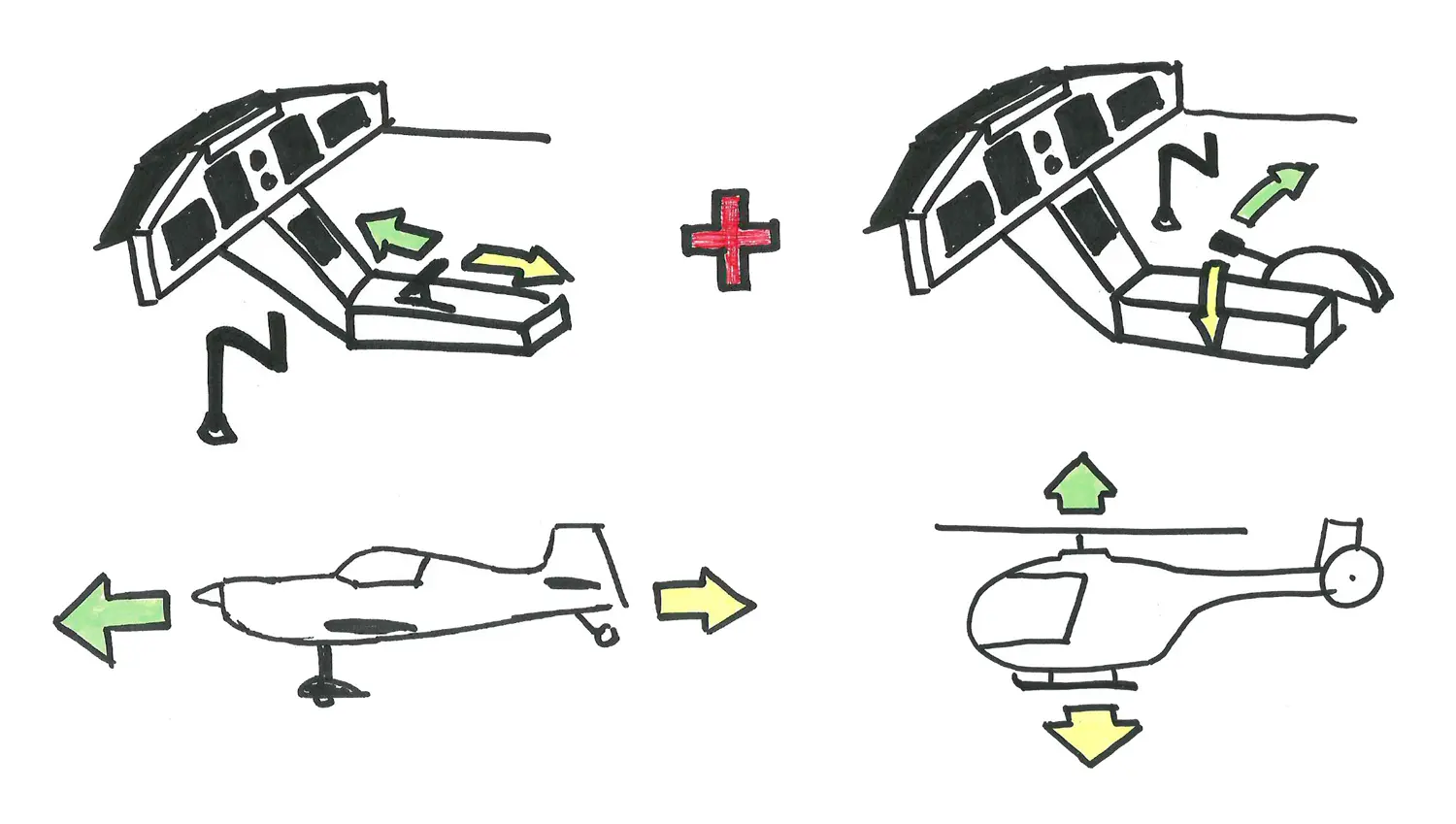CATL - Collective and Throttle Lever
Overview
Helicopters trade off maximum flight performance for the ability to hover. The helicopter industry is therefore currently developing new helicopter configurations, such as compound helicopter or tiltrotors, that are not only faster but also have improved range compared with conventional helicopters. In the eyes of a pilot, these new machines are seen as a hybrid between helicopter and traditional aircraft. Conventional control inceptors, such as a thrust or collective lever, are not ideally suited for use during the very different flight phases of hover / low speed (helicopter mode) or high speed (airplane mode). Control inputs based on conventional collective lever or throttle could be counterintuitive in some portions of the fight envelope and therefore compromise safety. This project examines new control elements based on human-centered design philosophies and tries to present a new kind of thrust and collective control method.
Project Description
The project already underwent several phases:
- The system requirements were defined in detail
- A 3D CAD model was created incorporating all components needed for a fully functional flight simulator prototype and the respective supporting calculations.
- A fully functional prototype was built and integrated with the ReDSim flight simulator
- The ReDSim was modified for the use of control wheels or center sticks
- The simulator was updated with the simulation model of a Tilt-Rotor aircraft
The next phase of the project is to start testing the unit in the simulator with the help of professional pilot from the fixed and rotary wing world.
At a glance
- Involved Institutes and Centres: Center for Aviation (ZAV), Center for Product and Process Development (ZPP)
- Project Lead: Pierluigi Capone
- Project Team: Raphael Monstein, Gabriel Schneider
- Project Partner: internal
- Project Financing: Self-funded
- Project duration: ongoing
